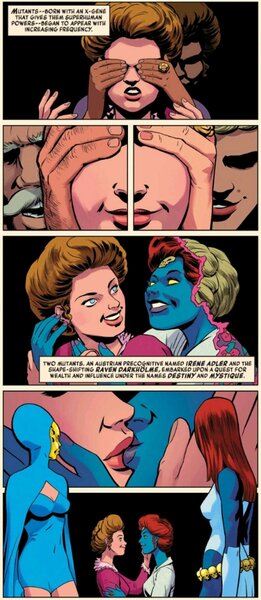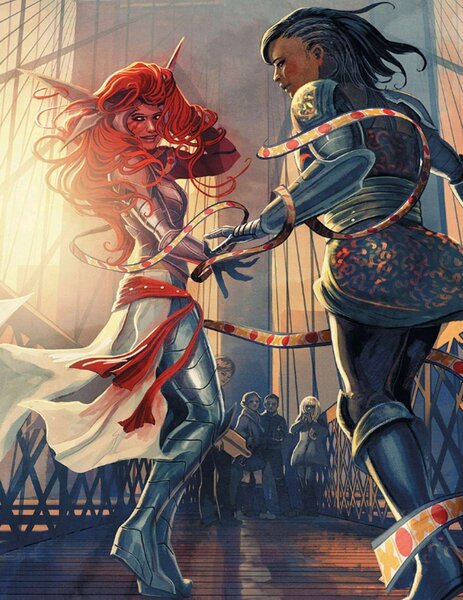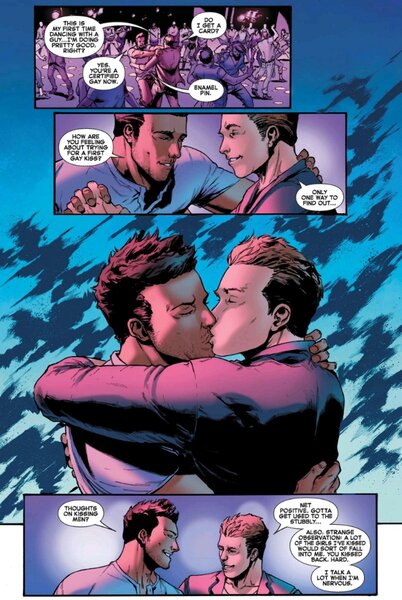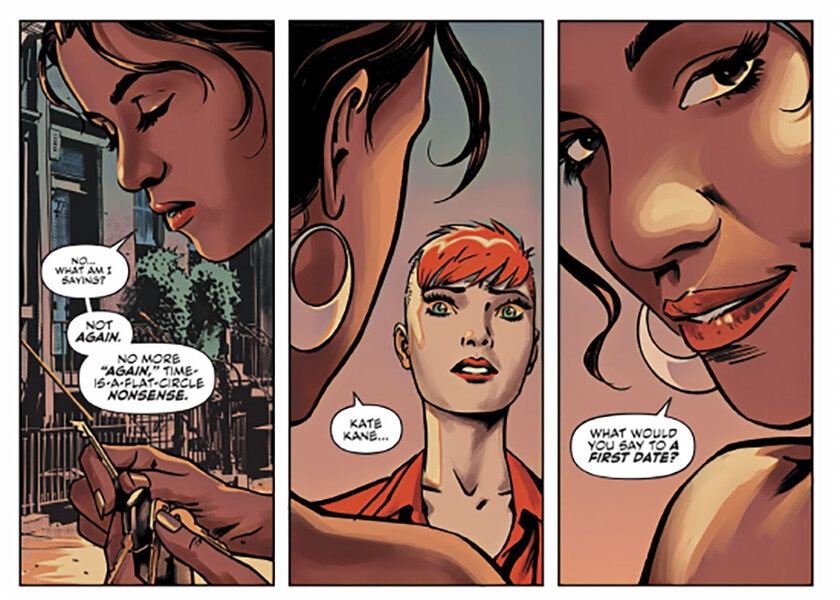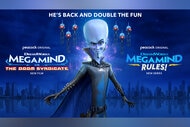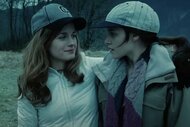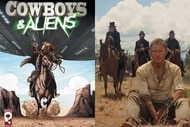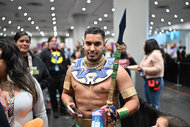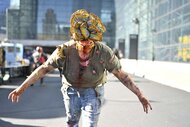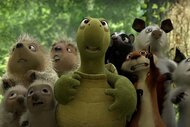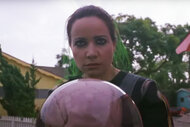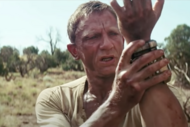Create a free profile to get unlimited access to exclusive videos, sweepstakes, and more!
Queer superheroes of the modern age
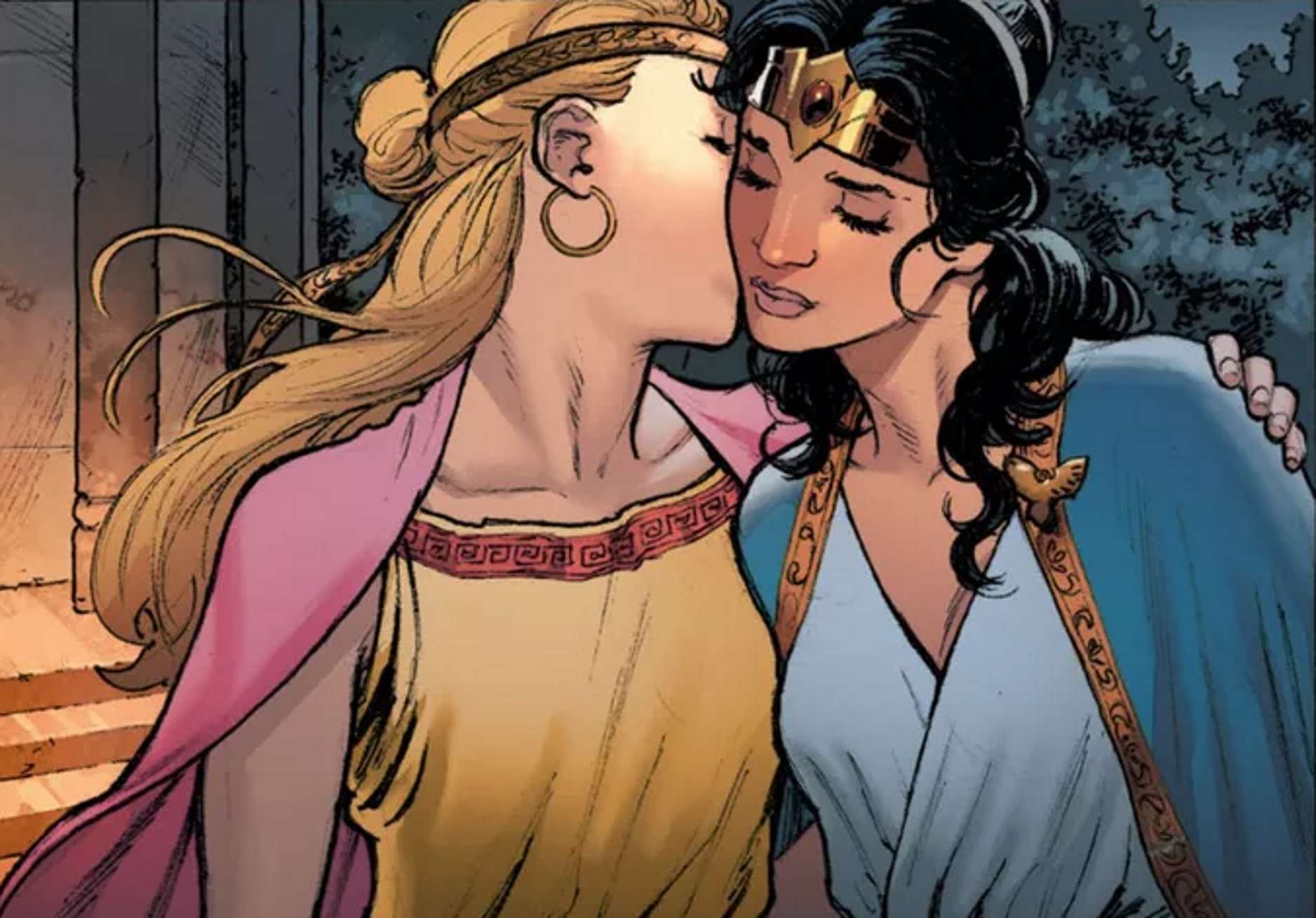
When we talk about queer superheroes in comics, generally the discussion is centered in the ‘80s and ‘90s, when we first started seeing representation — mostly in subtext, occasionally through text, and almost always leaving something to be desired in its portrayal of queer lives.
Over the last two decades, however, there has been significant progress made for greater diversity on all fronts. Though there are still plenty of examples of bad moves and token inclusion, there is no denying that we’ve come a long way, thanks in no small part to queer fans and creators advocating for and writing better stories.
In the late ‘90s and early 2000s, there was a lot of flash-in-the-pan representation that has since more or less vanished from the pages. Notably, Gen13 is a team that seldom makes appearances now, but they were a top seller in the ‘90s. Rainmaker, one of the main cast of teen heroes, was an Indigenous woman who identified herself as a lesbian. She briefly dated the soul-patch-sporting, aptly-named Burnout, but we never saw her really interact with women other than a few awkward moments of mildly objectifying her female teammates. Rainmaker has been absent for some time, and her representation was unfortunately questionable. It also led to an uproar in a fandom that was hostile to queer inclusion. Other Wildstorm characters such as Midnighter and Apollo have been celebrated for their open queerness, but their appearances have been increasingly sporadic.
Over at Image, Angela got her start as the enemies-turned-lovers of Spawn, but after a series of lawsuits, she eventually made a home for herself at Marvel. While under the penmanship of Keiron Gillen, Angela became involved with a trans woman named Sera, who became her traveling companion and, ultimately, her lover. The two of them only appeared with one another for a few story arcs before Angela dropped off the face of the planet for a time. Recently, when we saw Angela in Strikeforce, Sera was gone, though Angela did share a kiss with Satanna, Daughter of Satan.
Marvel's track record of queer representation is inconsistent, to say the least, but there is no questioning that the company has introduced a surprising number of queer characters to the canon. The Runaways series certainly made some missteps along the way, but it is known for its queer representation with characters like Xavin, Nico, and Karolina Dean. The Young Avengers skirted around Hulkling and Wiccan’s relationship for a while, but their first on-panel kiss remains one for the books. Characters like Loki and Prodigy were confirmed bisexual, while America Chavez came out as a lesbian and enjoyed an excellent 12-issue solo run that was rooted in her heritage and her queer identity.
Meanwhile, the X-Men, long an analogy for oppression, has always been surprisingly low on queer content. Northstar was out for a long time, but his sexuality remained at the margins. He mentored a young queer mutant named Anole, who was supposed to die at the end of the arc but survived, even if his appearances since have been irregular. As for Northstar, when he was married to a man named Kyle, he all but fell off the face of the Earth. After nearly 40 years, Mystique and Destiny’s relationship was revealed as canonical, but Destiny is still deceased and Mystique is floundering among the X-Men. Rictor and Shatterstar are both queer, but their on-panel appearances tend to revolve more around their break-ups than anything else. Iceman is out and enjoyed two short series in which he dated a temporary human cast member and flirted with Wolverine’s wayward son Daken. Meanwhile, besides glimpses here and there, longstanding queer-coded characters like Kate Pryde, Rachel Summers, and Illyana remain mostly closeted.
DC gets a lot of positive press for Batwoman, and there’s no denying that she’s a monumentally important character, but it’s also true that a lot of their representation has backslid in recent months, as Batwoman hasn’t had a series and characters like Harley Quinn and Poison Ivy have had their romantic relationship consistently walked back or outright erased. There are a lot of great queer characters in the canon; we just don’t see any of them all that often. Renee Montoya’s troubled coming out was followed up with an all-too-brief stint as the Question, and now she usually appears as a guest star. Meanwhile, characters that have been hinted at as bisexual for many years have been finally confirmed. For John Constantine, that meant several arcs in which his queer sexuality featured prominently, while for Catwoman it was introduced on a single page only to be essentially forgotten.
There are plenty of other interesting queer characters on DC’s roster. Recently, Christopher Priest’s Deathstroke run explored Slade Wilson’s troubled son Jericho, aka Joey. Joey was initially intended to be a gay character upon his introduction back in the ‘80s, but, in a somewhat paradoxical move, was deemed “too stereotypical” and so his heterosexuality was doubled down on. He was revealed to have multiple girlfriends that we simply never saw him interact with. Years passed with the once-soulful Jericho enduring multiple deaths and heel-turns until ultimately he showed up again in the Deathstroke series, refusing to label his sexuality but using it as a manipulation tactic more than a genuinely felt desire. He is a fascinating character and here’s hoping that a writer with a clear vision of his arc finds him soon.
Other queer characters that don’t receive nearly enough attention include Batgirl’s Alyssa Yeoh, one of the incredibly sparse trans characters in superhero comics. Alan Scott’s son Obsidian teetered on the brink of coming out for many years, sliding fully into outright villainy at times. When he finally did establish himself as a queer man, he almost completely disappeared from the books. Grace Choi and Black Lightning’s Thunder as well as Traci 13 and Natasha Irons are examples of great, compelling queer relationships that have struggled to find their place in continuity. Scandal Savage and Knockout had an interesting dynamic in Villains United and Secret Six and ultimately ended up in a polyamorous relationship with a woman named Liana. Outside of their appearances in Secret Six, however, these characters are seldom seen.
Peripheral characters like Shining Knight and Madame Xanadu both have short but poignant arcs. Shining Knight was the gender-bending hero of the Seven Soldiers of Victory series but has been mostly forgotten since, while Madame Xanadu had a short relationship in the past that is covered in her ongoing series — but that was a love story over five centuries old that ended in her partner being brutally slaughtered. Since then, there’s been little mention or focus on her queerness despite a slightly increased profile via Swamp Thing and Justice League: Dark appearances.
It's true that in sheer numbers, queer rep in comics has come a long way, but so many of these characters are given brief arcs only to vanish into obscurity. More importantly, almost all of these storylines are told by straight writers, so while we are moving forward, it does seem like it’s at a snail’s pace at times. Still, the representation that is listed here alone is more than triple that of all previous decades combined, so there is something to show for all the ongoing conversations around queer characters. Hopefully, two decades from now, many of these forgotten or lesser-known characters will have their own iconic arcs, told by queer creators.
